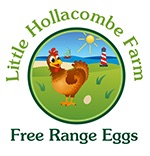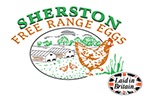Six hours after release of the yolk from the ovary (ovulation), the egg already has the albumen around it and the membranes, together with the first sprinkling of shell material. This forms a sandpaper-like covering, with some rigidity, and weighing less than 1g.
If, at 7 hours post ovulation, one startles the bird, say by opening and shutting an umbrella rapidly, the hen will constrict her oviduct, putting a permanent fold around the equator of the egg, which, on completion of shelling and laying, appears as the recognisable “belly-band” egg.
The shell process continues to grow. After 10 hours, it weights 1g, 1.8g after 12 hours, 2.8g at 14 hours, 4g at 18 hours, 4.8g at 20 hours, 5g at 21 hours, 5.5g at 22 hours, 5,8g at 23 hours and 6g at 24 hours.
The volume of blood in the average layer is about 85ml and the maximum calcium concentration is about 30mg/100ml of blood. So, the average layer has about 25mg calcium in circulation.
Generally speaking, there is more than the hen’s bodyweight laid down as shell in the laying year.
Layers need calcium 7 days before first egg.
Studies have shown that the eggs with the thickest shell in enriched cages were stronger than those from litter pens. Eggshell weight was 7.23g, compared to 5.14g.
The cuticle is laid down on the palisade layer of the shell in the last 1.5-2 hours in the uterus.
It is water-insoluble, mainly glycoprotein, with some carbohydrate and fat.
It is formed in spheres < 1um in diameter, which form an uneven layer 0.5 – 12.8um thick.
Some birds, and some breeds, produce less, or even no cuticle, and it decreases with age of bird.
The brown colour of hens’ eggs was originally called “oorhoedein” by Sorby in 1875. It is a haemoglobin porphyrin, occurring as protoporphyrin IX, which has been found to have an anti-bacterial property against gram-positive bacteria. It is found in both true shell and cuticle.
The highest level of calcium carbonate in egg shells was found in Aseels (92.9%) and the lowest in White Silky eggs (84.75%). Aseel eggs were the hardest.
Naked Necks and White Leghorns were not much better than the Silky, at 87% and 88% respectively. Black Silky had 88.25%.
Avian Influenza H9N2 has been found to decrease shell thickness 1-5 days post challenge, and calcium content also decreased.
Because part of the calcium for the eggshell is drawn from the bone structure of the hen, and never completely replaced on a daily basis, by the later part of the production cycle, the bones become weaker, leading to fractures.
Higher rates of keelbone damage occurs in cage-free systems (28-89%) than in enriched cages (22-44%).
With bone breakage, egg production falls as a tradeoff for repair.
It has been calculated that if the laying cycle could be satisfactorily extended to 100 weeks, the UK laying flock could reduce by 2.5 million birds.
Under a 24 hour lighting programme, the ovulations and ovipositions take place over the whole 24 hours, resulting in a sequence, or clutch of eggs.
The interval between oviposition (laying) and ovulation (release from ovary) of the next egg is about 30 minutes. But, it can be as little as 15 minutes, or as long as 2 hours.
The interval between consecutive ovipositions is more than 24 hours, but less than 25 hours.
As an example, a hen laying a clutch of 4 eggs, could lay them at say, 7.45am, 10.45am, 12.40pm and 16.00 hours.
The first egg of a sequence is ovulated 8-9 hours after onset of light period.
The difference in time of day between first and final ovulation in a sequence is 4.5 – 8 hours in the chicken.









